 Well, FINALLY, AirVenture Oshkosh is barely a week away. It seems like forever, doesn’t it? It has been two years but feels like a decade. I hope you can attend, but if not, I plan to be on-site all week gathering the latest about Light-Sport Aircraft, Sport Pilot kits, and ultralights.
In this edition of “LSA Update,” I’ll cover an update about…
1️⃣ Jabiru and their AirVenture activities; 2️⃣ Beringer’s new SensAir system that works with your smartphone; 3️⃣ an impressive father-and-daughter partnership forming a new dealer for Seamax; 4️⃣ a preview of the new Dragon powered paraglider single-place quad; and, 5️⃣ competition successes for E-Props and Polini engines.
Let’s get this show underway…
Jabiru USA
One of the earliest Light-Sport Aircraft to be approved was the Australian Jabiru brand.
Not only was Jabiru one of the first approved SLSA (#22) but also one of the most prolific with SLSA #22 J250-SP, #23 J170-SP, #40 Calypso SP, #67 J230-SP (redesignated as J230-D in 2013), and #142 J170-D.
Well, FINALLY, AirVenture Oshkosh is barely a week away. It seems like forever, doesn’t it? It has been two years but feels like a decade. I hope you can attend, but if not, I plan to be on-site all week gathering the latest about Light-Sport Aircraft, Sport Pilot kits, and ultralights.
In this edition of “LSA Update,” I’ll cover an update about…
1️⃣ Jabiru and their AirVenture activities; 2️⃣ Beringer’s new SensAir system that works with your smartphone; 3️⃣ an impressive father-and-daughter partnership forming a new dealer for Seamax; 4️⃣ a preview of the new Dragon powered paraglider single-place quad; and, 5️⃣ competition successes for E-Props and Polini engines.
Let’s get this show underway…
Jabiru USA
One of the earliest Light-Sport Aircraft to be approved was the Australian Jabiru brand.
Not only was Jabiru one of the first approved SLSA (#22) but also one of the most prolific with SLSA #22 J250-SP, #23 J170-SP, #40 Calypso SP, #67 J230-SP (redesignated as J230-D in 2013), and #142 J170-D.LSA Update: Pre-AirVenture Oshkosh 2021 — Aircraft, Products, Dealers, Achievements
Well, FINALLY, AirVenture Oshkosh is barely a week away. It seems like forever, doesn’t it? It has been two years but feels like a decade. I hope you can attend, but if not, I plan to be on-site all week gathering the latest about Light-Sport Aircraft, Sport Pilot kits, and ultralights.

1️⃣ Jabiru and their AirVenture activities; 2️⃣ Beringer’s new SensAir system that works with your smartphone; 3️⃣ an impressive father-and-daughter partnership forming a new dealer for Seamax; 4️⃣ a preview of the new Dragon powered paraglider single-place quad; and, 5️⃣ competition successes for E-Props and Polini engines.
Let’s get this show underway…
Jabiru USA
One of the earliest Light-Sport Aircraft to be approved was the Australian Jabiru brand.

When you are an early entrant you have time to get the details right and flesh out the operation.

The company remains a member of a very select club that manufactures both airframe and engine.
All Jabiru models appear compact but actually have spacious interiors; especially the latest J230-D has a cavernous aft area (where people sit when the same base airframe is used to make a four seater). A third door for this purpose serves U.S. pilots by making the loading of luggage (or your pet) easier.
With its 4th Generation six-cylinder engine producing 120 horsepower, Jabiru J230-D will satisfy a lot of pilots. Stop by their space at AirVenture and perhaps you’ll meet some of their owners that will attend another annual Jabiru Owners Group (JOG) gathering.
Beringer
Known far and wide for their distinctive orange-ish wheels, Beringer has built a premium brand serving aircraft from the lightest LSA to Cirrus’ SR-series.

Beringer’s SensAIR™ system is connected to a mobile app on your smartphone (image) thanks to pressure and temperature sensors fitted to your Beringer rim. Sensors are normally switched off to save the battery (2 to 3 years lifetime) and are activated when the smartphone is detected within a 30-foot radius (10 m).
Low pressure and temperature levels are set by the user on his smartphone so he or she can receive a notification.
No need to crawl under your plane to check pressure anymore, thanks to SensAIR you can check your pressure before and during each flight! SensAir is available now for 4-, 5-, 6-, and 8-inch wheels.
Seamax
With fabrication in Brazil, Seamax has been in the U.S. market for many years, earning FAA acceptance as #63 in our SLSA List.
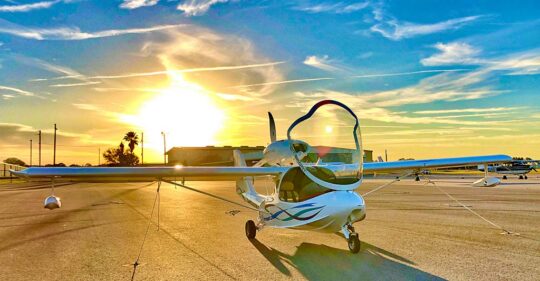
Now, Seamax is pleased to announce a new dealer based in Tulsa, Oklahoma. The seaplane maker now offers support, training, and sales for several Midwestern states. The new business is called Central Seaplanes and they become the official sales agent and brand representative for Oklahoma, Arkansas, Missouri, Kansas, Colorado, New Mexico, and Texas.
Central Seaplanes will provide mechanical and maintenance service to Seamax aircraft in association with Johnson Aviation of Tulsa and plans to provide flight training in association with Destinations Executive Flight Club of Tulsa.

Central Seaplanes, LLC is a father-daughter, veteran-owned business represented by Kira and Todd Lang.
Todd is a former fighter pilot with 40 years of aviation experience and 11,000 logged hours with CFI, CFII, and MEI instructor credentials. Currently, he is an international Boeing 767 Captain for a major U.S. airline. Todd also holds a Master’s degree in Business Administration from Embry Riddle.
Kira has an Associate degree in aircrew safety systems technology, a Bachelor’s degree in aviation management and a Master’s degree in aviation and space science. She is currently finishing her doctorate. Kira received her Private Pilot certificate when she was 18 years old.
Kira said she has always dreamed of starting her own business with her dad. She has a passion for aviation and has thrived in the industry. She intends to dedicate her time to the success of Central Seaplanes and their association with Seamax aircraft.
Dragon PPG
Welcome to Dragon PPG (powered paraglider).

“Considerable research and thought have been put into producing a high quality seated powered paraglider that meets all FAR 103 requirements,” wrote Erin. Dragon PPG is aimed at taller and heavier PPG pilots. The design features a roll cage for protection. Such a configuration is common in powered parachutes (different aircraft, if you aren’t familiar) but quads have previously been very light weight construction that mainly aimed to provide some structure to accommodate wheels, and not much more.
Based on Rotax 503 power, Erin described thrust of the engine as “incredible!” Dragon was weight tested at 4Gs assuming a 220-pound pilot. Commonly, powered paragliders prefer the lightweight, higher-revving Polini engine (see next news item).
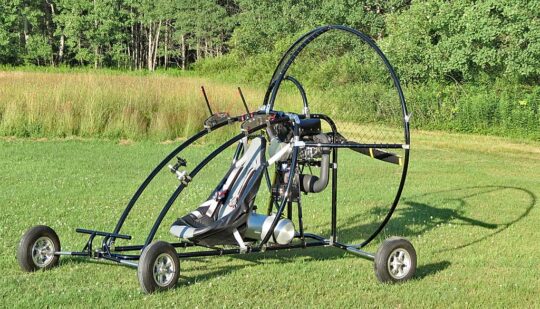
Dragon PPG is made in the USA.
“The challenge (and frustration) for many quad PPG pilots is a lack of power and thrust and overall structural integrity,” continued Erin. “Dan set out to design a wheeled powered paraglider [carriage] using heavy-wall aluminum for the main structural components with aluminum clamp devices and U-channels clamps to secure the tubing. The reason is primarily to add strength to the tubing without drilling of holes which can weaken the structural integrity of the frame.”
He reported the Dragon frame and engine have been designed to meet FAR 103 requirements. The Dragon frame itself can also be purchased as a stand alone frame without engine if the customer desires.
E-Props and Polini Engines
In early July 2021 flying enthusiasts participated in the second edition of a STOL competition for ultralights (with engines limited to 100 horsepower) in the south of France. The contest was organized by the French Federation, FFPLUM.

Earlier, on the weekend of June 17, 18, and 19, the French Open Training Slalom 2021 at Sevins Le Lac, “the podium was monopolized by pilots using Polini Thor engines,” boasted the Italian engine maker. Champion Alexandre Mateos, an ace of this sport, dominated results winning in his debut with the new Thor 303. Commonly, E-Props have been paired successfully with Polini.

In third, winning the bronze medal, was Marie Mateos also using the new Thor 303. Marie reached a new goal with Thor Polini engines. After previously winning the female category, in this recent competition she was the first woman to be on the winner’s podium ranked equally with male pilots.
In a similarly timed event called “Slalomania,” in Bornos in the south of Spain, the Slalom Open Spanish Championship took place. “Once again the pilots powered by Thor 303 engines confirmed this engine is superior for powered Paragliders,” reported Polini.
Of the 21 pilots that took part to the competitions, 16 chose Polini Thor engines.

I hope to achieve sensory overload at Oshkosh ’21 and I will do my best to transmit that excitement to you. Watch for the bright orange logo denoting coverage from the big show.
Off we go!
 Well, FINALLY, AirVenture Oshkosh is barely a week away. It seems like forever, doesn’t it? It has been two years but feels like a decade. I hope you can attend, but if not, I plan to be on-site all week gathering the latest about Light-Sport Aircraft, Sport Pilot kits, and ultralights.
In this edition of “LSA Update,” I’ll cover an update about…
1️⃣ Jabiru and their AirVenture activities; 2️⃣ Beringer’s new SensAir system that works with your smartphone; 3️⃣ an impressive father-and-daughter partnership forming a new dealer for Seamax; 4️⃣ a preview of the new Dragon powered paraglider single-place quad; and, 5️⃣ competition successes for E-Props and Polini engines.
Let’s get this show underway…
Jabiru USA
One of the earliest Light-Sport Aircraft to be approved was the Australian Jabiru brand.
Not only was Jabiru one of the first approved SLSA (#22) but also one of the most prolific with SLSA #22 J250-SP, #23 J170-SP, #40 Calypso SP, #67 J230-SP (redesignated as J230-D in 2013), and #142 J170-D.
Well, FINALLY, AirVenture Oshkosh is barely a week away. It seems like forever, doesn’t it? It has been two years but feels like a decade. I hope you can attend, but if not, I plan to be on-site all week gathering the latest about Light-Sport Aircraft, Sport Pilot kits, and ultralights.
In this edition of “LSA Update,” I’ll cover an update about…
1️⃣ Jabiru and their AirVenture activities; 2️⃣ Beringer’s new SensAir system that works with your smartphone; 3️⃣ an impressive father-and-daughter partnership forming a new dealer for Seamax; 4️⃣ a preview of the new Dragon powered paraglider single-place quad; and, 5️⃣ competition successes for E-Props and Polini engines.
Let’s get this show underway…
Jabiru USA
One of the earliest Light-Sport Aircraft to be approved was the Australian Jabiru brand.
Not only was Jabiru one of the first approved SLSA (#22) but also one of the most prolific with SLSA #22 J250-SP, #23 J170-SP, #40 Calypso SP, #67 J230-SP (redesignated as J230-D in 2013), and #142 J170-D.

 Certainly, some LSA producers have ambitions for four seat cruisers or tougher bush aircraft or larger load-carrying aircraft to satisfy pilots that want more capability from their aircraft.
Certainly, some LSA producers have ambitions for four seat cruisers or tougher bush aircraft or larger load-carrying aircraft to satisfy pilots that want more capability from their aircraft. The fellows importing 800XP from then-producer Aveko rebadged the aircraft for the American market. It featured fixed gear and a fixed prop to meet the LSA regulations of the day. They also added wing area and for good marketing measure, they added sexy upward-curved winglets.
The fellows importing 800XP from then-producer Aveko rebadged the aircraft for the American market. It featured fixed gear and a fixed prop to meet the LSA regulations of the day. They also added wing area and for good marketing measure, they added sexy upward-curved winglets. In the present time — before big changes coming with the so-called
In the present time — before big changes coming with the so-called 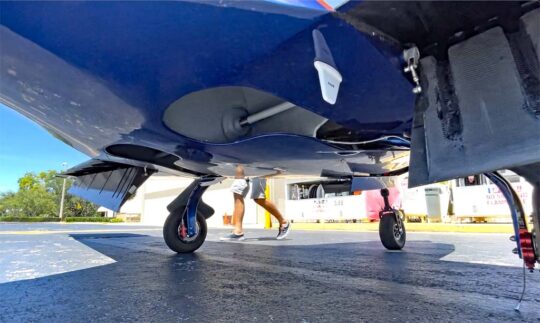







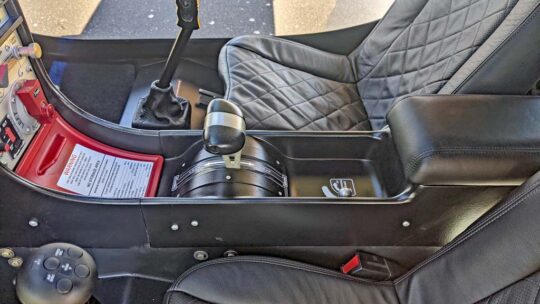


 “This departs from the long-standing premise that the compensation a flight instructor receives for instruction is not compensation for piloting the aircraft, but rather is compensation for the instruction,” concurred Justine Harrison, AOPA’s general counsel.
“This departs from the long-standing premise that the compensation a flight instructor receives for instruction is not compensation for piloting the aircraft, but rather is compensation for the instruction,” concurred Justine Harrison, AOPA’s general counsel.
 You see, for years, the FAA has kind of wanted things both ways.
You see, for years, the FAA has kind of wanted things both ways. But what about Sport Pilot Flight Instructors (CFI-S)? Sport Pilot Flight Instructors are often simply Sport Pilots with the additional Sport CFI certificate. No Commercial Pilot Certificate. No 1st, 2nd, or 3rd Class Medical at all.
But what about Sport Pilot Flight Instructors (CFI-S)? Sport Pilot Flight Instructors are often simply Sport Pilots with the additional Sport CFI certificate. No Commercial Pilot Certificate. No 1st, 2nd, or 3rd Class Medical at all. It seems to me that the FAA discharged its weapon at its own foot. Give those attorneys a bonus.
It seems to me that the FAA discharged its weapon at its own foot. Give those attorneys a bonus.
 Since I also hear questions regarding techniques to fly in mountains, why not combine these two challenges? This information can be useful to anyone who flies any kind of aircraft anywhere in the world.
Since I also hear questions regarding techniques to fly in mountains, why not combine these two challenges? This information can be useful to anyone who flies any kind of aircraft anywhere in the world.
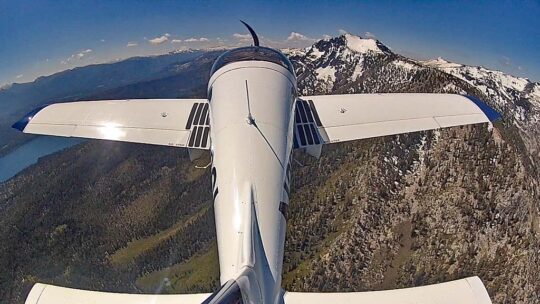


 The Koch Chart is the classic many use to determine performance and a well known standard. General aviation aircraft typically have great performance tables and graphs, but LSA and even more so, ultralights, may come with rather basic performance guidance so this Koch Chart is a great tool.
The Koch Chart is the classic many use to determine performance and a well known standard. General aviation aircraft typically have great performance tables and graphs, but LSA and even more so, ultralights, may come with rather basic performance guidance so this Koch Chart is a great tool.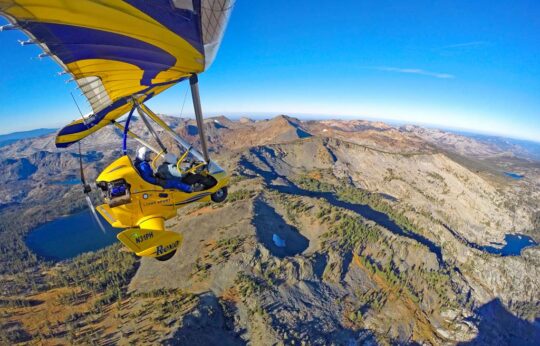



 “We are thrilled to announce that this afternoon we achieved a World Endurance Record for an electric aircraft, breaking the previous mark set in Germany last year.” (Note: Official recognition always takes more time.)
“We are thrilled to announce that this afternoon we achieved a World Endurance Record for an electric aircraft, breaking the previous mark set in Germany last year.” (Note: Official recognition always takes more time.) Barrie reported he and his team battled strong winds and rain as well as below zero morning temperatures to achieve the record. (Australian’s seasons are roughly reversed from America’s; this is not summer in Australia.)
Barrie reported he and his team battled strong winds and rain as well as below zero morning temperatures to achieve the record. (Australian’s seasons are roughly reversed from America’s; this is not summer in Australia.)

 Most of us, however, are not Alberto. Apparently, this man does not care to sit idly and admire his past achievements.
Most of us, however, are not Alberto. Apparently, this man does not care to sit idly and admire his past achievements.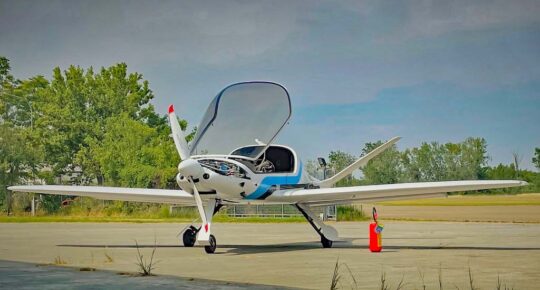 It’s worth noting several countries that accept ASTM standards do not limit speed. That’s why ASTM created standards for retracts, adjustable props, and other developments that are not presently permitted in America. (The organization is now called ASTM International for that precise reason.)
It’s worth noting several countries that accept ASTM standards do not limit speed. That’s why ASTM created standards for retracts, adjustable props, and other developments that are not presently permitted in America. (The organization is now called ASTM International for that precise reason.)
 “Risen powered with the Rotax 914 turbo for the first time passed the barrier of 400 kph (249 mph) on a 15 kilometer straight course and 379 kph (235 mph) on a 50-kilometer triangle. Truly spectacular especially with a 115 horsepower engine. Just imagine what would happen with a 915iS?” asked Commercial Director, Stéphan D’haene in the fall of 2020.
“Risen powered with the Rotax 914 turbo for the first time passed the barrier of 400 kph (249 mph) on a 15 kilometer straight course and 379 kph (235 mph) on a 50-kilometer triangle. Truly spectacular especially with a 115 horsepower engine. Just imagine what would happen with a 915iS?” asked Commercial Director, Stéphan D’haene in the fall of 2020.
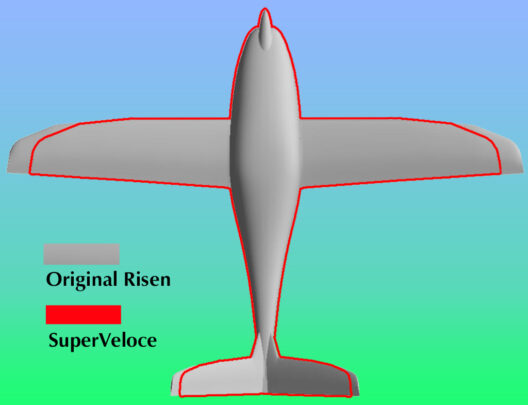 “We performed stalls and saw a 10 kilometer per hour or 6 knot increase compared to the normal Risen,” observed Stéphan. “This is great news as it confirms the computer simulations and allows us to stay within European Microlight regulations, too.”
“We performed stalls and saw a 10 kilometer per hour or 6 knot increase compared to the normal Risen,” observed Stéphan. “This is great news as it confirms the computer simulations and allows us to stay within European Microlight regulations, too.”

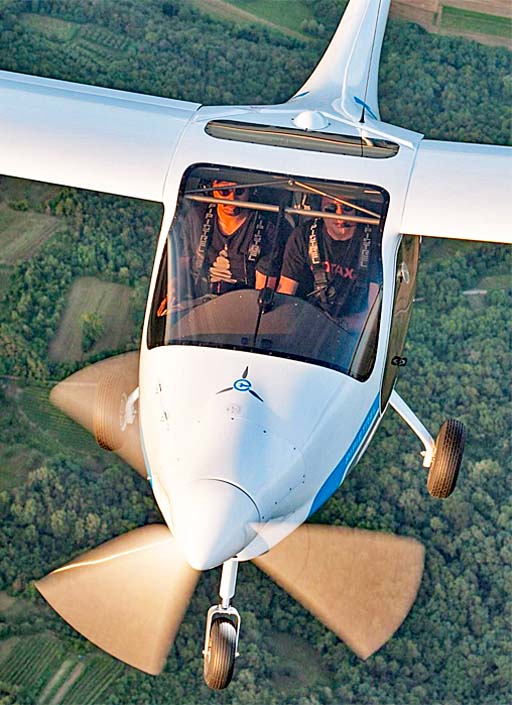 Article
Article  photo from
photo from 
 Let’s be fair: Electric airplanes are relatively new and they will only get better. It is not reasonable to expect them to perform equally with fossil-fuel-powered aircraft that have been developed over many decades and with billions of dollars invested to help them achieve the high state-of-the-art they possess today.
Let’s be fair: Electric airplanes are relatively new and they will only get better. It is not reasonable to expect them to perform equally with fossil-fuel-powered aircraft that have been developed over many decades and with billions of dollars invested to help them achieve the high state-of-the-art they possess today. How long will the aircraft fly at cruise/cross-country? — Answer: “45 minutes at 18kW (reduced power) and 75 knots indicated airspeed”
How long will the aircraft fly at cruise/cross-country? — Answer: “45 minutes at 18kW (reduced power) and 75 knots indicated airspeed”


 A little over a year ago, the engine builder from Gunskirchen, Austria celebrated their 100th anniversary.
A little over a year ago, the engine builder from Gunskirchen, Austria celebrated their 100th anniversary. 


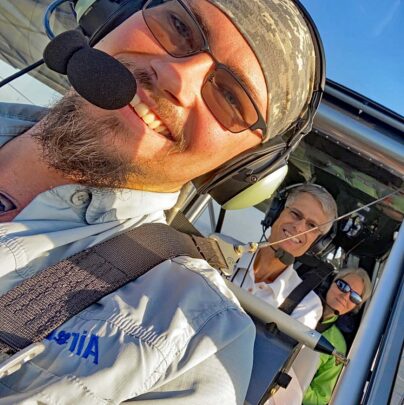



 Once we descended below 300 feet, that gusty air made final approach feel like a roller coaster ride. Woo-hoo!
Once we descended below 300 feet, that gusty air made final approach feel like a roller coaster ride. Woo-hoo!
 A new enterprise bought all rights and assests from bankruptcy estate of Atol Avion Oy, which filed for bankruptcy on February 2, 2021.
A new enterprise bought all rights and assests from bankruptcy estate of Atol Avion Oy, which filed for bankruptcy on February 2, 2021. Aurora, a two-seat amphibian, has been under development for nine years. Scandinavian Seaplanes forecasts serial production will start by the end of Q2 2022. A core team familiar with Atol Avion has been hired to work for company and this will enable the official transfer of the nearly finished type certification project with EASA (European Aviation Safety Agency, the Union’s counterpart to FAA).
Aurora, a two-seat amphibian, has been under development for nine years. Scandinavian Seaplanes forecasts serial production will start by the end of Q2 2022. A core team familiar with Atol Avion has been hired to work for company and this will enable the official transfer of the nearly finished type certification project with EASA (European Aviation Safety Agency, the Union’s counterpart to FAA).
 The Polish company’s top-of-the-line
The Polish company’s top-of-the-line  Get factory
Get factory 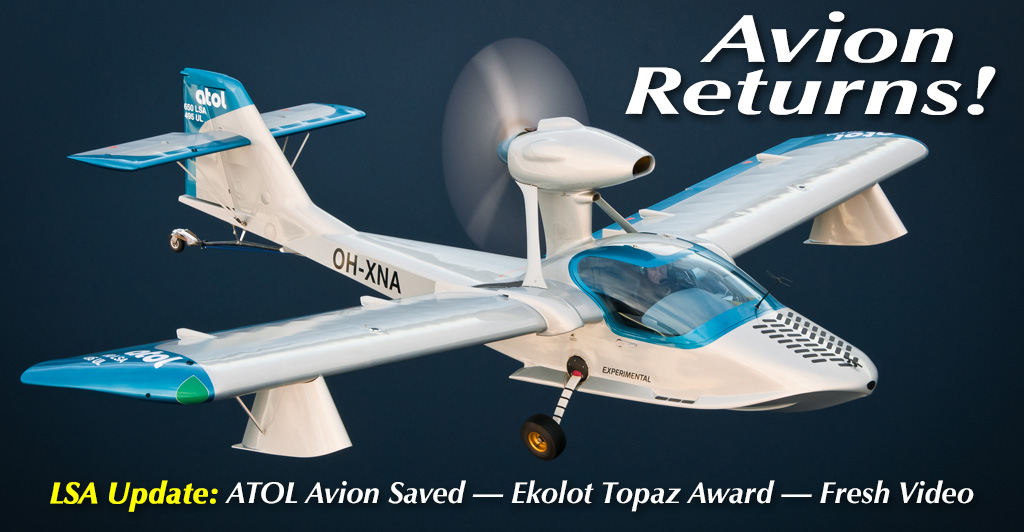
 Here’s the simple response: light aircraft with modern (read: powerful and efficient) engines tend to perform admirably well in high elevations, higher heat, and high humidity. If you fly almost any of these aircraft in high density conditions you already know they perform sprightly.
Here’s the simple response: light aircraft with modern (read: powerful and efficient) engines tend to perform admirably well in high elevations, higher heat, and high humidity. If you fly almost any of these aircraft in high density conditions you already know they perform sprightly.
 “I was very impressed with the performance of the CTLS GT with the Rotax 914 Turbo,” said Flight Design test pilot Nico Stambula. “CTLS GT Turbo climbs like a rocket and easily reaches 140 knots at altitude.” Stambula added that the 914 intercooled engine maintains consistent temperatures. In addition, this is a very smooth flying package.”
“I was very impressed with the performance of the CTLS GT with the Rotax 914 Turbo,” said Flight Design test pilot Nico Stambula. “CTLS GT Turbo climbs like a rocket and easily reaches 140 knots at altitude.” Stambula added that the 914 intercooled engine maintains consistent temperatures. In addition, this is a very smooth flying package.” Someone was bound to ask why engineers didn’t use the newest 141-horsepower Rotax 915 iS, so I queried the company on this question.
Someone was bound to ask why engineers didn’t use the newest 141-horsepower Rotax 915 iS, so I queried the company on this question.
 Don’t feel too conspicuous. It’s happening to me, too, along with nearly everyone else. [
Don’t feel too conspicuous. It’s happening to me, too, along with nearly everyone else. [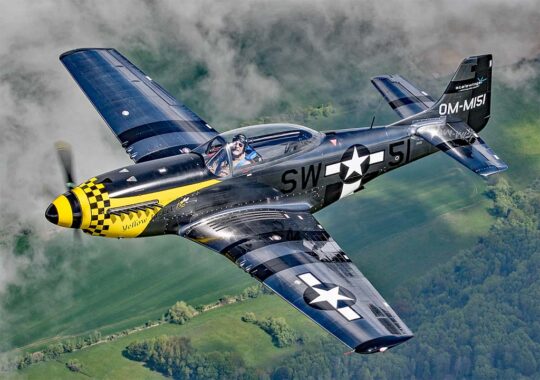 ScaleWings reported, “Aircraft serial number #001 took off at 11:37 am into a light cloudy sky.” The all-important first flight went without problems.
ScaleWings reported, “Aircraft serial number #001 took off at 11:37 am into a light cloudy sky.” The all-important first flight went without problems.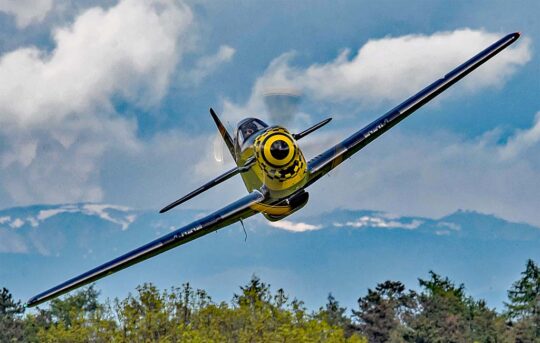 The ScaleWings SW-51 Mustang is a true-to-scale high performance replica modeled precisely upon the original North American P-51 Mustang aircraft dimension but fully built from carbon fiber.
The ScaleWings SW-51 Mustang is a true-to-scale high performance replica modeled precisely upon the original North American P-51 Mustang aircraft dimension but fully built from carbon fiber. With first flight in its logbook, ScaleWings said, “We will produce and deliver 5 aircraft in 2021 and 12 aircraft in 2022.”
With first flight in its logbook, ScaleWings said, “We will produce and deliver 5 aircraft in 2021 and 12 aircraft in 2022.” “SW-51 Mustang costs less than 10% to acquire, less than 1% to maintain and it burns less than 15% of the fuel of an original North American P-51 Mustang aircraft. That’s a big savings but this is not an inexpensive kit.
“SW-51 Mustang costs less than 10% to acquire, less than 1% to maintain and it burns less than 15% of the fuel of an original North American P-51 Mustang aircraft. That’s a big savings but this is not an inexpensive kit.




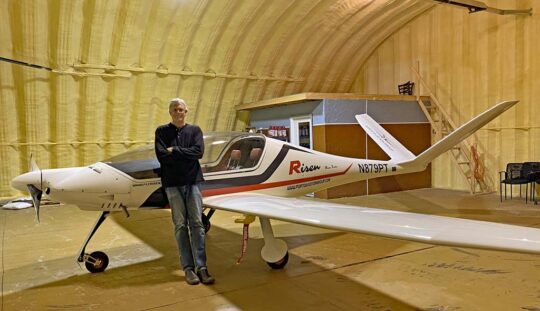



 Look out, Icon A5! Here comes Wave and it should be quite exciting.
Look out, Icon A5! Here comes Wave and it should be quite exciting. In one image you notice the Rotax 915iS hiding inside its shapely engine nacelle.
In one image you notice the Rotax 915iS hiding inside its shapely engine nacelle. First flight is ahead — though this is one of those nailing-jello-to-a-wall stories. First flight is something a designer never wishes to rush. Yet after all the time spent working on this design, the desire to see Wave go aloft must be tremendous — not even considering what pressure those waiting for the design may be exerting.
First flight is ahead — though this is one of those nailing-jello-to-a-wall stories. First flight is something a designer never wishes to rush. Yet after all the time spent working on this design, the desire to see Wave go aloft must be tremendous — not even considering what pressure those waiting for the design may be exerting. Wave also planned to use a novel arrangement of main gear — called “CrossOver” gear — such that it could handle the expected duties without needing to be retracted. Until the company gets first flight in their logbook, they’re concentrating on the essentials so it’s too early for confirmation of specific features.
Wave also planned to use a novel arrangement of main gear — called “CrossOver” gear — such that it could handle the expected duties without needing to be retracted. Until the company gets first flight in their logbook, they’re concentrating on the essentials so it’s too early for confirmation of specific features.
 Here in early summer 2021, new information was discovered that shines additional light on what is ahead.
Here in early summer 2021, new information was discovered that shines additional light on what is ahead. LAMA, represented by myself and Roy Beisswenger, had numerous fruitful discussions with FAA. We went to many meetings and made several trips to FAA headquarters in Washington, DC. In most of these meetings we found FAA people interested to advance LSA in the aviation world and interested to hear what changes we wanted. LAMA was satisfied with those discussions and, indeed, FAA incorporated into the proposal every LAMA request. All LAMA’s “asks” are captioned in
LAMA, represented by myself and Roy Beisswenger, had numerous fruitful discussions with FAA. We went to many meetings and made several trips to FAA headquarters in Washington, DC. In most of these meetings we found FAA people interested to advance LSA in the aviation world and interested to hear what changes we wanted. LAMA was satisfied with those discussions and, indeed, FAA incorporated into the proposal every LAMA request. All LAMA’s “asks” are captioned in 
 Lots of other avenues are available. For example, EAA has an endowment from the late-aviation philanthropist James Ray that allows the Oshkosh organization to give scholarships for around 100 pilots per year. LAMA is working with EAA right now to add more scholarships; these will be specific to Sport Pilot and must occur in Light-Sport Aircraft. EAA chapters around the country can participate.
Lots of other avenues are available. For example, EAA has an endowment from the late-aviation philanthropist James Ray that allows the Oshkosh organization to give scholarships for around 100 pilots per year. LAMA is working with EAA right now to add more scholarships; these will be specific to Sport Pilot and must occur in Light-Sport Aircraft. EAA chapters around the country can participate. Setting up the LSA Mall takes some extra hands, so LAMA has used various great volunteers over the years. One young fellow joined us a few years back. His name is Jatniel Acevedo and he is the subject of this article, but not because he’s a volunteer, helpful as that has been.
Setting up the LSA Mall takes some extra hands, so LAMA has used various great volunteers over the years. One young fellow joined us a few years back. His name is Jatniel Acevedo and he is the subject of this article, but not because he’s a volunteer, helpful as that has been.
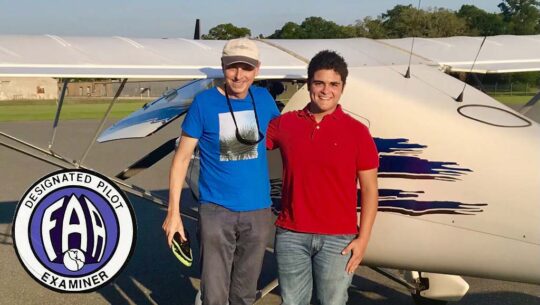


 We continue with further coverage from the first major airshow in almost two years… THANKS to
We continue with further coverage from the first major airshow in almost two years… THANKS to  Counting all types, the “alternative aircraft” sector may account for a quarter or more of all LSA sales. Alternative aircraft have attributes that drive customer inquiries: better affordability and unique flying qualities.
Counting all types, the “alternative aircraft” sector may account for a quarter or more of all LSA sales. Alternative aircraft have attributes that drive customer inquiries: better affordability and unique flying qualities. Powrachute Powerhouse
Powrachute Powerhouse
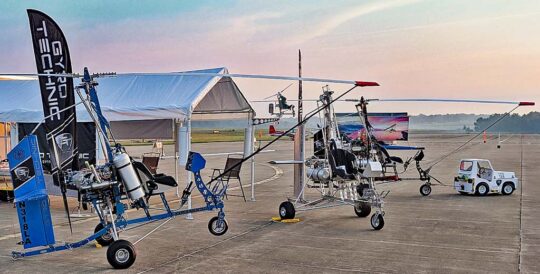 Those older American gyroplanes — think: Bensen Gyrocopter — were nearly all single seaters. Maybe that was best then, when stability was different than today. Then I discovered the VX1 at the Midwest LSA Expo. Hmmm, a modern gyroplane with all the present-day knowledge but in single seat form. Intriguing. It doesn’t look like other modern gyros and the video below will explain.
Those older American gyroplanes — think: Bensen Gyrocopter — were nearly all single seaters. Maybe that was best then, when stability was different than today. Then I discovered the VX1 at the Midwest LSA Expo. Hmmm, a modern gyroplane with all the present-day knowledge but in single seat form. Intriguing. It doesn’t look like other modern gyros and the video below will explain. Levil Aviation greatly empowered the role of tablets in the cockpit today by pioneering the first iPad-compatible wireless avionics suite in 2009. Today’s
Levil Aviation greatly empowered the role of tablets in the cockpit today by pioneering the first iPad-compatible wireless avionics suite in 2009. Today’s 
 Duc Prop Success Story
Duc Prop Success Story Of course, he is a sales and service outlet for Duc Hélices. Manufacturing occurs in Frontenas, France. According to Gaetan, the French enterprise is humming at its still-new
Of course, he is a sales and service outlet for Duc Hélices. Manufacturing occurs in Frontenas, France. According to Gaetan, the French enterprise is humming at its still-new 
 —
— Then, he described a plan to go slowly at a return to manufacturing the vintage aircraft as a Special, fully-built LSA. Another bravo, including for taking the time to get it right. Readers should understand getting semi-tractor trailer loads of inventory, tooling, jigs and more will take some time to get set up properly.
Then, he described a plan to go slowly at a return to manufacturing the vintage aircraft as a Special, fully-built LSA. Another bravo, including for taking the time to get it right. Readers should understand getting semi-tractor trailer loads of inventory, tooling, jigs and more will take some time to get set up properly.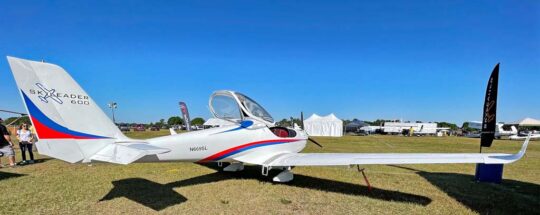 Early LSA enthusiasts knew this aircraft as the Jhilivan (or Kappa) KP-5. It was
Early LSA enthusiasts knew this aircraft as the Jhilivan (or Kappa) KP-5. It was  Once up on the wing, you can simply stand on the floor in front of the seat and sit down. Unlike its predecessor from Kappa, Skyleader 600 has both seats side-by-side; KP-5 had a slimmer cockpit width and staggered the right seat aft a few inches to give more room and a wider view. While the current configuration is more commonplace and will probably please more buyers, I rather liked the staggered seating; it gave the pilot in command great visibility out both sides.
Once up on the wing, you can simply stand on the floor in front of the seat and sit down. Unlike its predecessor from Kappa, Skyleader 600 has both seats side-by-side; KP-5 had a slimmer cockpit width and staggered the right seat aft a few inches to give more room and a wider view. While the current configuration is more commonplace and will probably please more buyers, I rather liked the staggered seating; it gave the pilot in command great visibility out both sides.
 Evolution Aircraft enjoyed a banner year in 2020, despite all the covid anxiety.
Evolution Aircraft enjoyed a banner year in 2020, despite all the covid anxiety.


 Just today, I learned that
Just today, I learned that 

 —
— —The
—The  —The much-beloved Rotax 503 will not be returning to the market. The Austrian company discontinued the popular two-stroke engine years ago, meaning many who still want one must search among used engines. The good news: many have only a few hundred (or less) hours on them; a good used engine is both a bargain and a worthy powerplant for your light aircraft kit. Now, though, a very similar engine is coming from Russia, of all places. It’s called the
—The much-beloved Rotax 503 will not be returning to the market. The Austrian company discontinued the popular two-stroke engine years ago, meaning many who still want one must search among used engines. The good news: many have only a few hundred (or less) hours on them; a good used engine is both a bargain and a worthy powerplant for your light aircraft kit. Now, though, a very similar engine is coming from Russia, of all places. It’s called the  —
—
